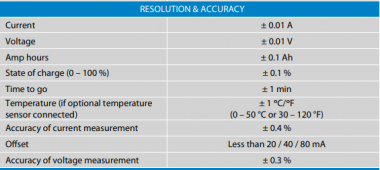Checkthisout
Solar Wizard
- Joined
- Nov 14, 2021
- Messages
- 5,213
Hello. On my 12 system, I want to measure small current draws (like a few watts). This does NOT have to handle full draw but maybe a max of like 10-20 amps between the equipment I want to measure and the battery.
With that said, does the victron or someone else's smart shunt catch draws that are only a few watts?
If not, what would work?
With that said, does the victron or someone else's smart shunt catch draws that are only a few watts?
If not, what would work?



